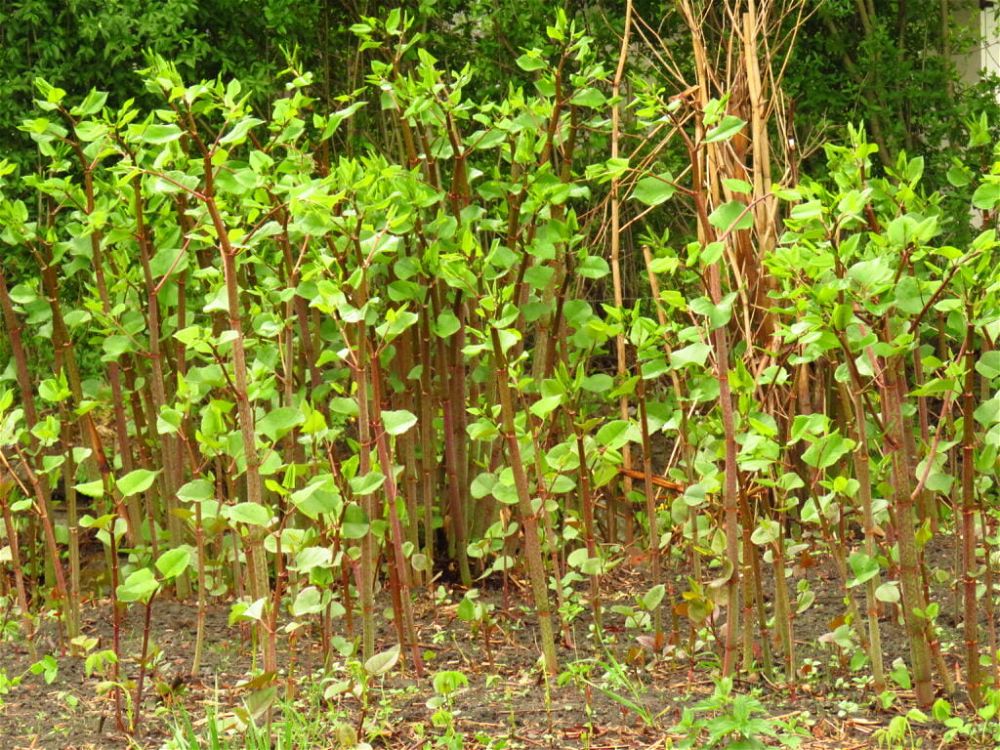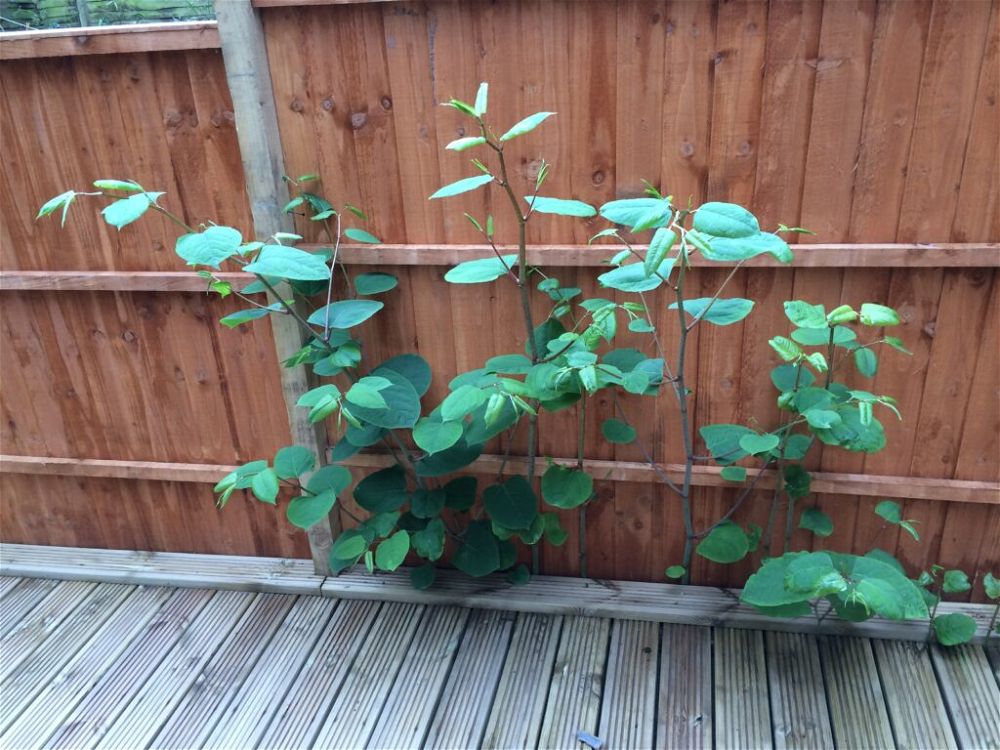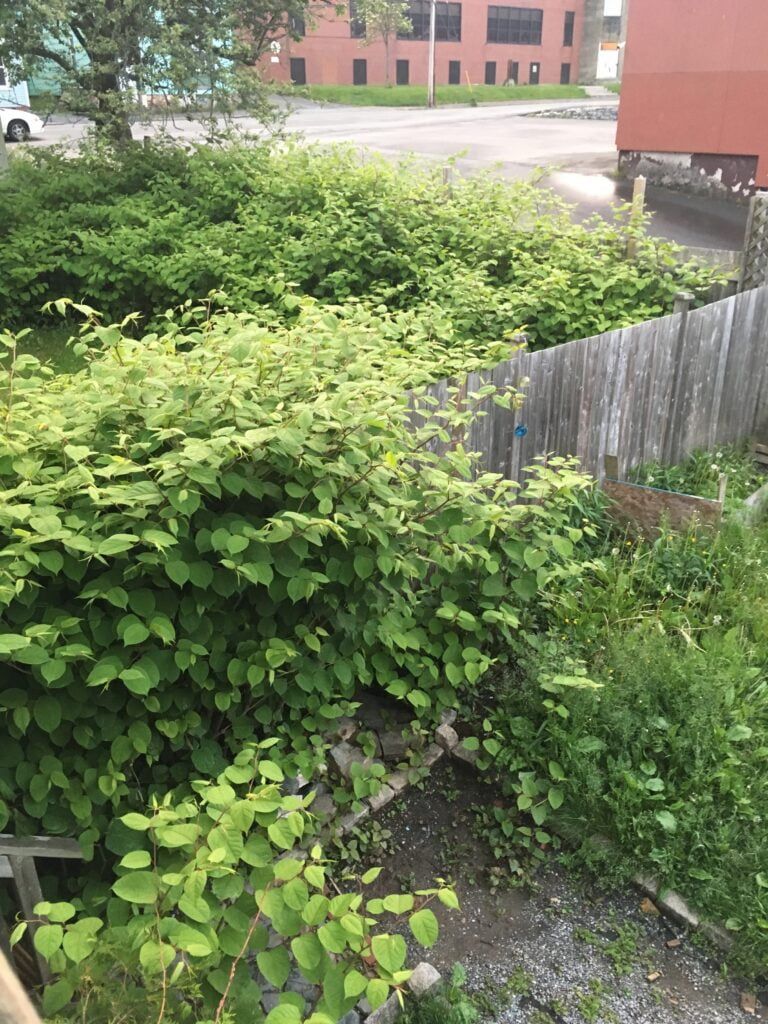
Failing to eradicate knotweed in your garden – or to tell a potential buyer that you have a problem with it – can be an expensive mistake, as a few homeowners have found out to their cost. Here is the lowdown on how to get rid of this fast-spreading plant.
What is Japanese knotweed?
An invasive, non-native plant with bamboo-like stems, Japanese knotweed (Fallopia japonica) is a problem for gardeners because its creeping roots spread rapidly and cause structural damage to concrete, asphalt and some other surfaces. It also grows so densely it competes for space with native flora. Knotweed’s rhizomes can regrow from a piece as small as a fingernail and can spread several metres in just a few weeks.
How do I identify Japanese knotweed?
For detailed images from leaves and shoots to rhizomes, log on to the Non-Native Species Secretariat’s website to download its knotweed identification sheet.
Royal Horticultural Society (RHS) members can upload images of potential knotweed online for identification on to its website.
Some professional firms have trained sniffer dogs which can detect Japanese knotweed rhizomes even when they are hidden beneath the ground.
How does it impact on you and your home?
While it is not illegal to have Japanese knotweed in your garden, you should aim to control it. According to the Environment Agency, if you allow it to spread to a neighbour’s garden you could be prosecuted or be issued with a community protection notice for causing a nuisance. As many as 5% of properties in the UK are affected by knotweed, either directly or indirectly via a neighbouring affected property, according to a YouGov survey carried out in 2020 together with data from knotweed removal specialist Environet.
Knotweed can impact on house prices by up to 10% and even if it is successfully treated, property values can be negatively affected by the stigma associated with it. Sellers will still need to legally declare it to buyers on the TA6 form completed as part of the conveyancing process.
Fail to warn buyers, and you could be taken to court for misrepresentation and have to pay thousands of pounds in compensation for the house’s loss of value.
Guy Barter, chief horticulturist at the RHS, says: “People who are not keen gardeners, or who wish to move in the next few years, would be better advised to hire a professional eradication firm, which can offer an insurance-backed guarantee or bond so the property can be sold. This will be costly unfortunately.”
How can I remove knotweed?
If you find just a small isolated area of knotweed, you can try to remove it yourself.
You can physically dig out these plants, but they can be difficult to eradicate completely and can take around four seasons.
It will take a similar time to remove them with weedkiller. For home gardeners, the RHS recommends glyphosate-based weedkillers with instructions for controlling Japanese knotweed on the label.
Weedkiller treatment can only be carried out during the growing season, from May to October.
Remember that unless the rhizome beneath the ground is killed, it can lie dormant for many years and may re-emerge if it is accidentally disturbed.
How do I dispose of knotweed?
Once you have removed the plants, you cannot put them in your green waste collected by the council as knotweed is classed as ‘controlled waste’ and needs to be taken to a licensed landfill site.
Once it is dry, it can be burnt on site, but you should contact your local council first to check if there are any restrictions. Alternatively, a specialist firm that is registered to carry controlled waste can dispose of plant waste at licensed landfill sites.
Guy Barter, chief horticulturist at RHS, says: “In theory, keen gardeners could attempt to eradicate knotweed themselves, bearing in mind that it may well take five years.”
“But the problem is that knotweed can start in neighbouring gardens, which means however much you try to eradicate it in your own garden, it will keep coming back.”
The RHS offers detailed advice on removing knotweed on its website.
What if my neighbour has knotweed?
Unless knotweed can be eradicated, not only from your garden but from adjacent areas, you may find it hard to sell your house as prospective buyers may be refused a mortgage.
Mr Barter explains: “If the infestation originates beyond the garden, re-infestation can occur quite readily unless measures are taken such as sinking deep barriers. This is rather difficult, and it might be better to attempt to negotiate with neighbouring landowners for a joint eradication endeavour. Or indeed, if needs must, implement legal sanctions against them in the form of an ASBO.”
What are the advantages of using a specialist firm?
You should consider hiring a specialist contractor for large areas and those which come from or lead to neighbouring gardens. They can assess the risk and provide a treatment plan and an insurance-backed guarantee – it is an expensive option but there will be no insurance-backed guarantees if you do it yourself and have problems when you come to sell or if it spreads to a neighbouring garden.
How do the professionals tackle it?
Professional firms can eradicate this plant in an environmentally-friendly way by digging out knotweed rhizomes from the soil.
For residential removal, Environet’s Resi-Dig-Out method, for example, excavates the infested area and then sifts the knotweed rhizome from the soil before returning the clean soil to the ground, so there is no need for new soil to be brought in and no chemicals used. This type of treatment can be carried out at any time of year and typically costs from around £5,000.
A cheaper option is for a specialist contractor to use a weedkiller, as these will be more powerful than domestic versions, so will work more quickly. Treatments can cost around £3,000.
How do I find a knotweed specialist?
To find a contractor in your area, contact the Property Care Association’s Invasive Weed Control Group for details of Japanese knotweed specialists who have been vetted.
Alternatively, contact the Invasive Non-native Specialists Association for a list of members or the British Association of Landscape Industries for a directory for its directory.
While you may resent spending thousands of pounds on specialist treatment – rather than on garden planting or furniture – don’t ignore the problem in the hope that your infestation can be cut back or won’t spread. Japanese knotweed rhizomes could be buried deep in the ground, with the potential to spread rapidly and cause havoc in the future.









